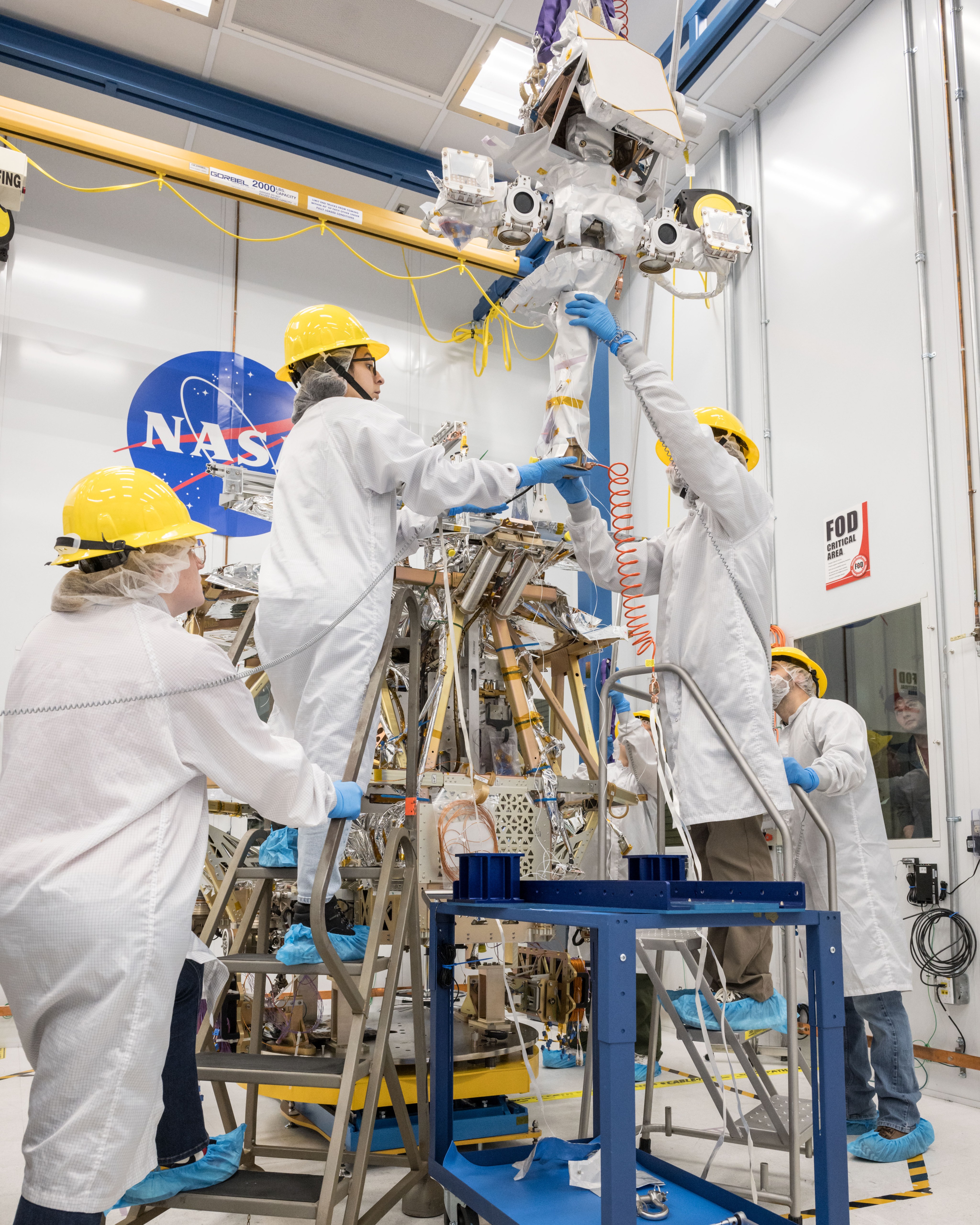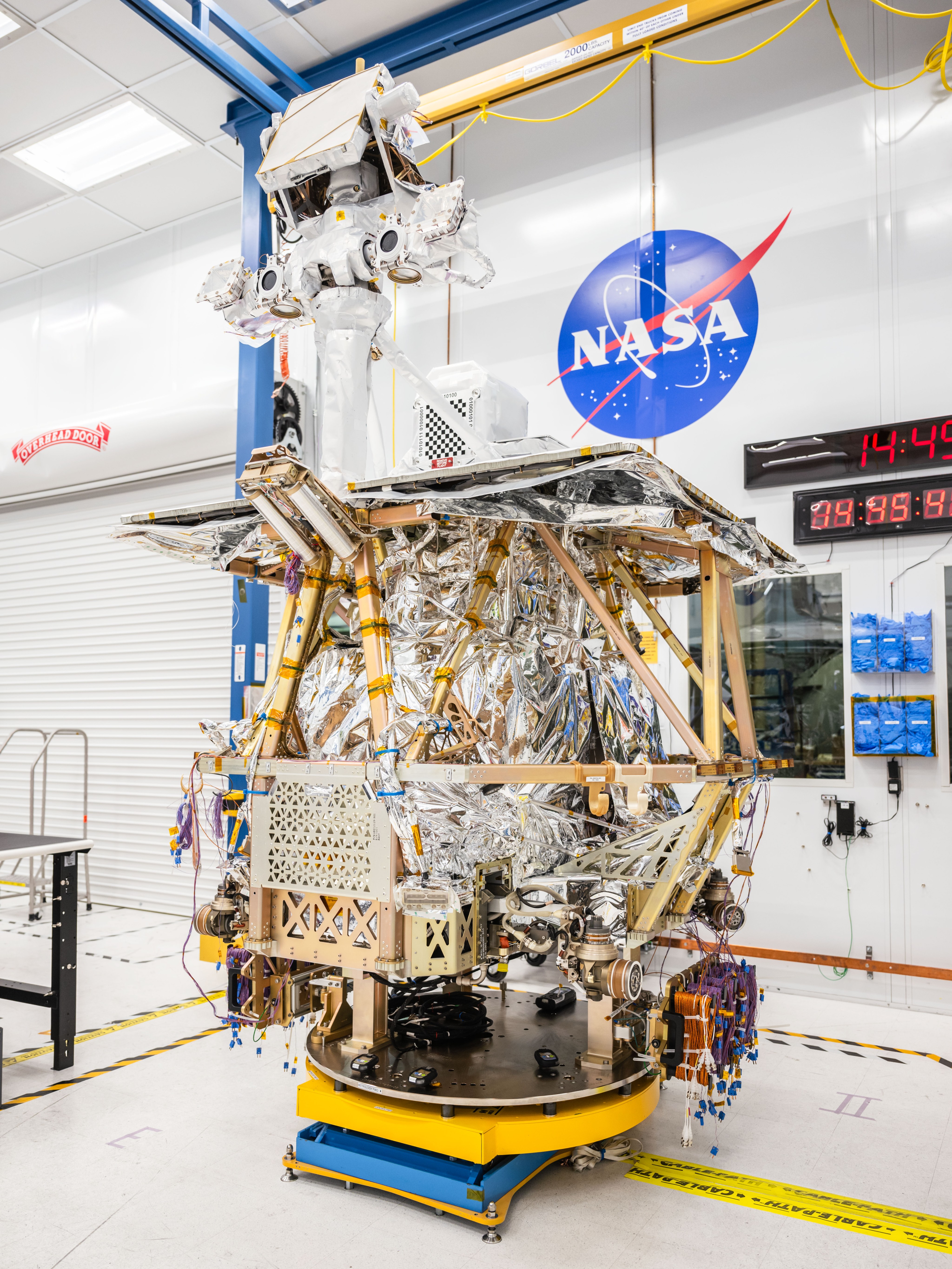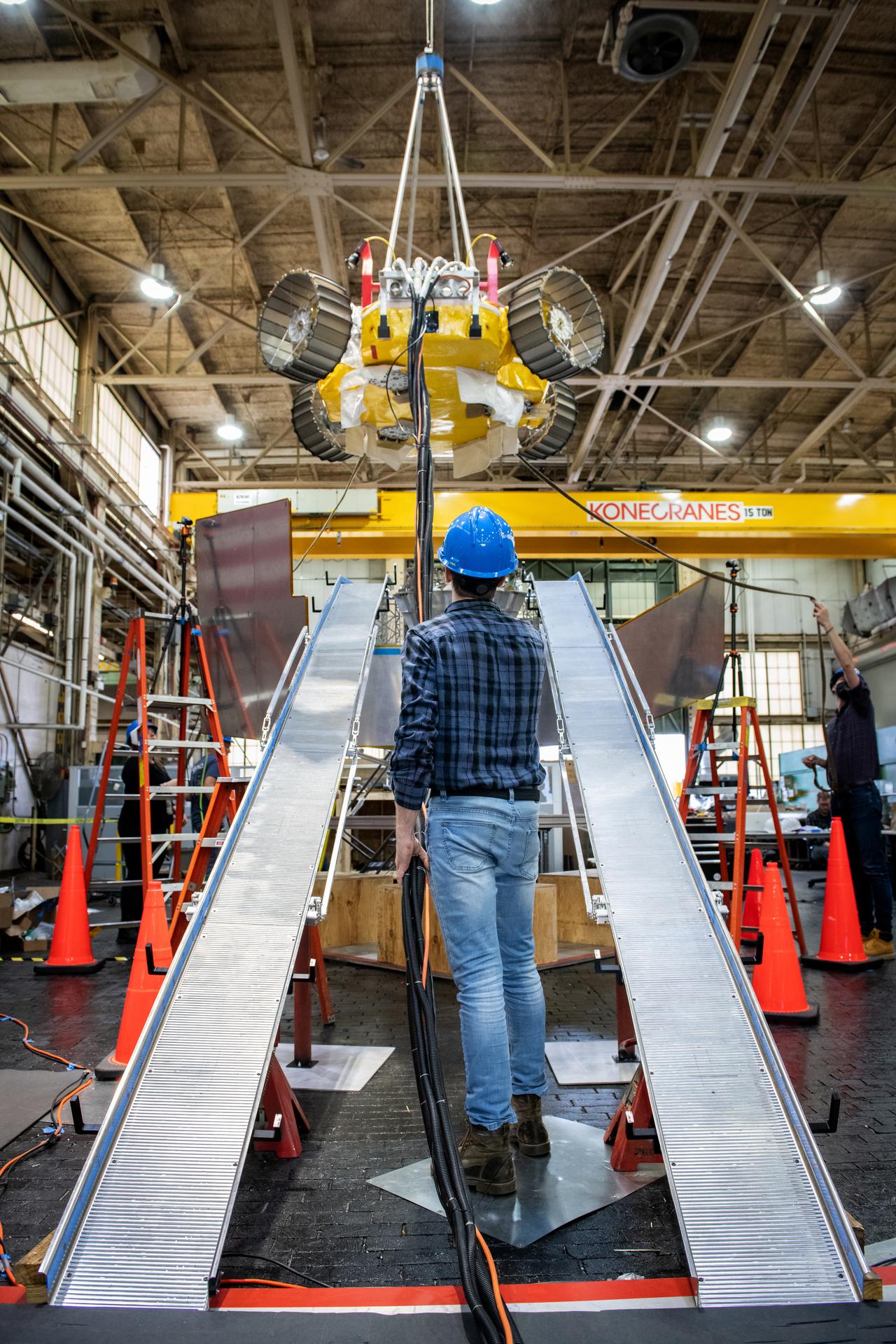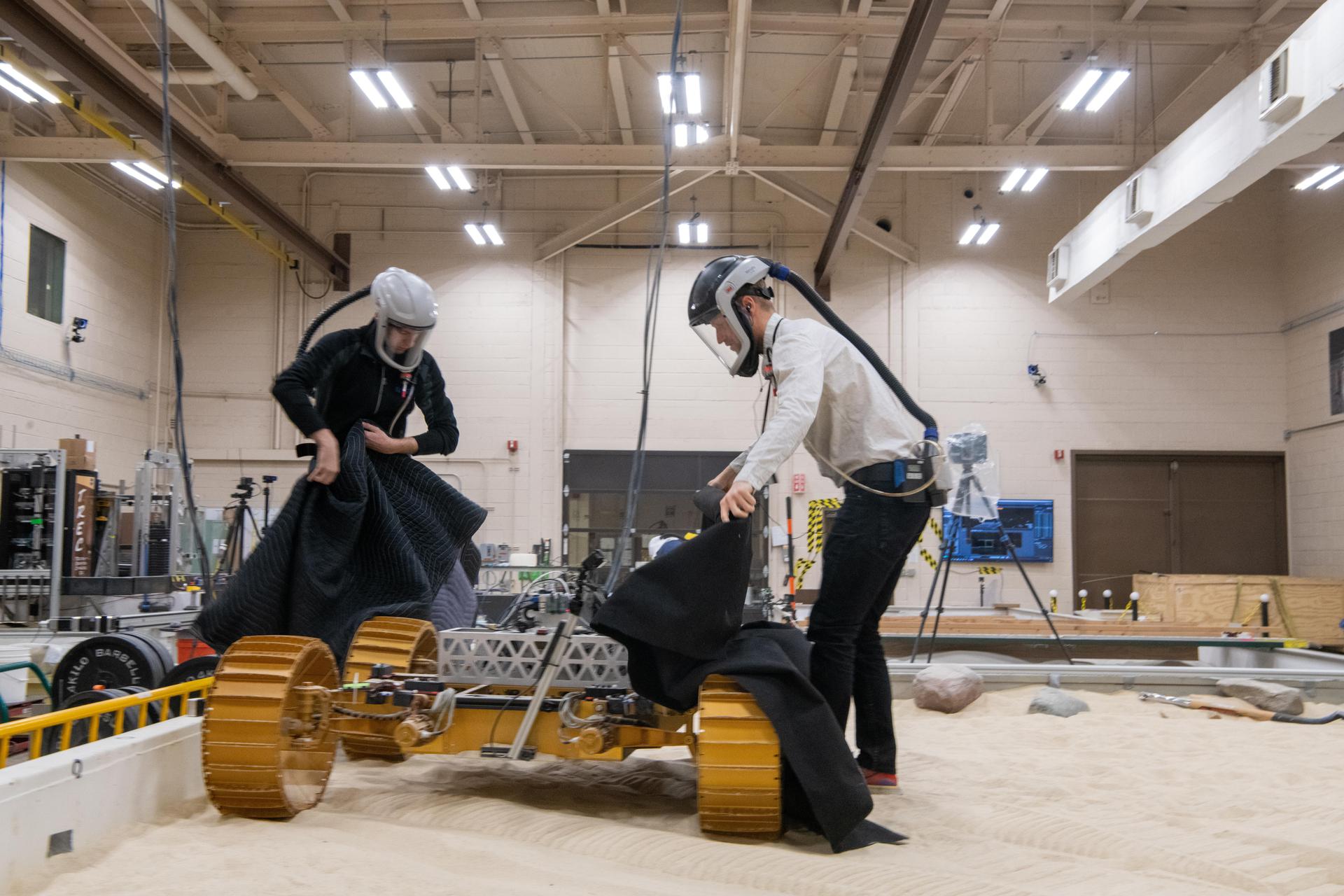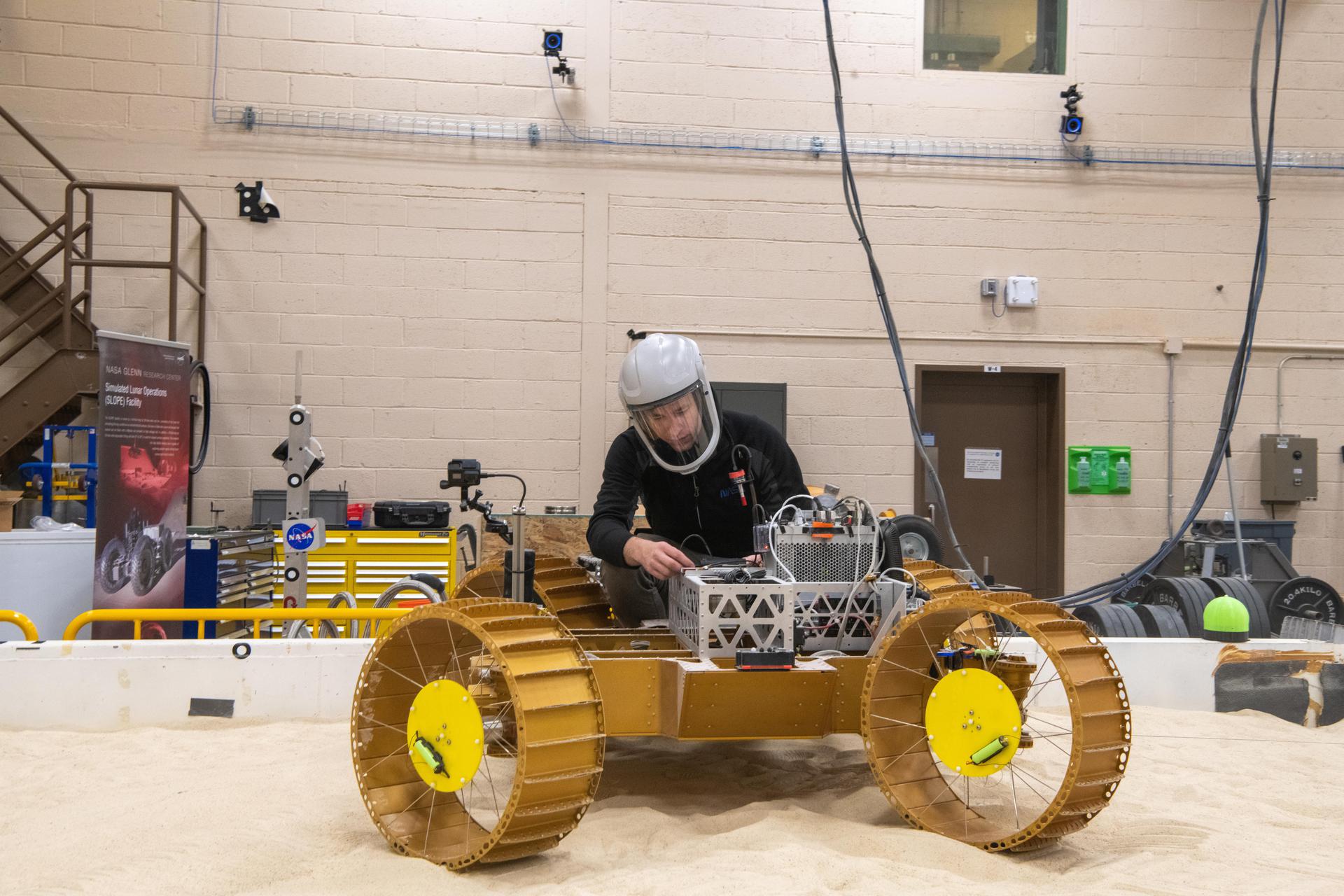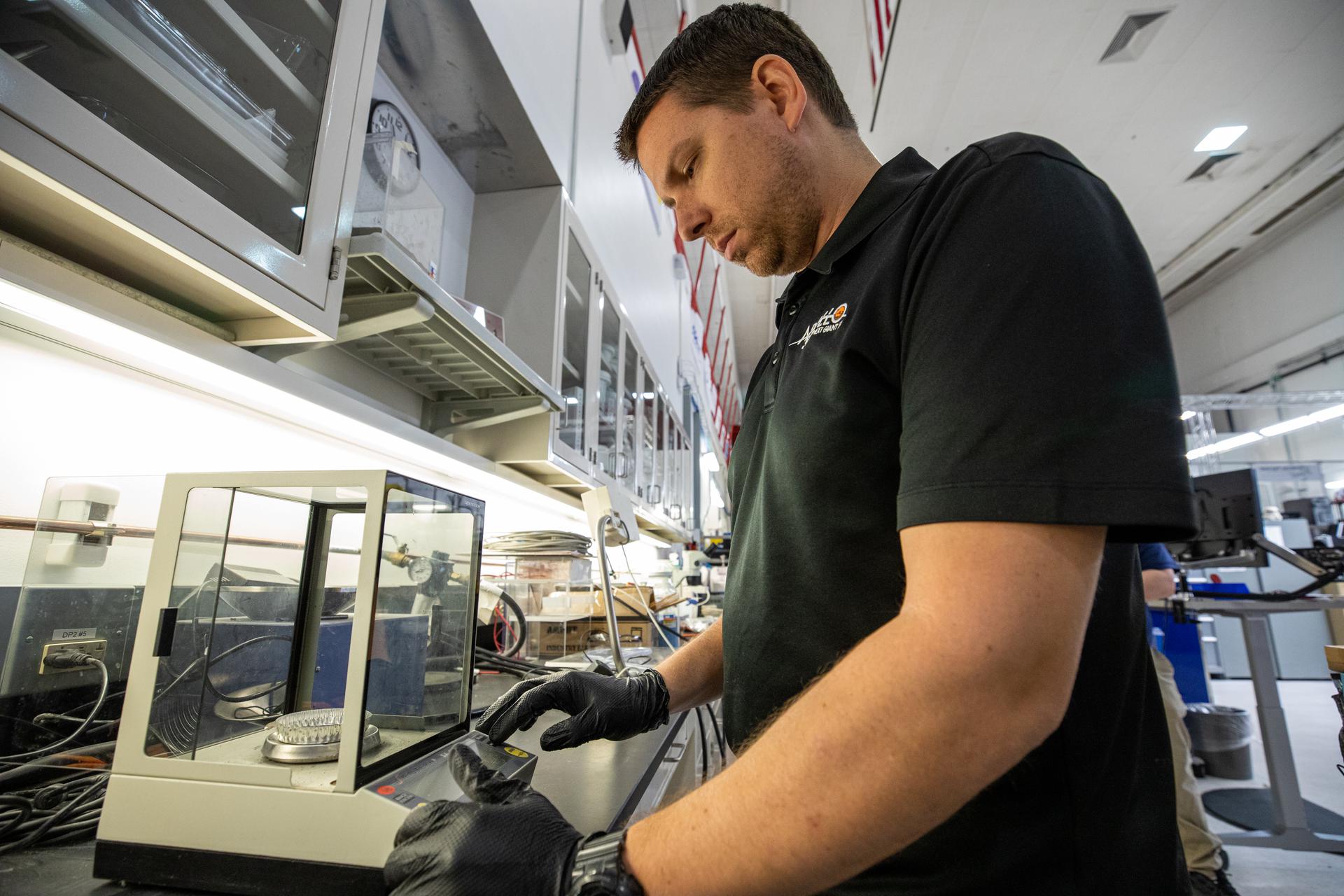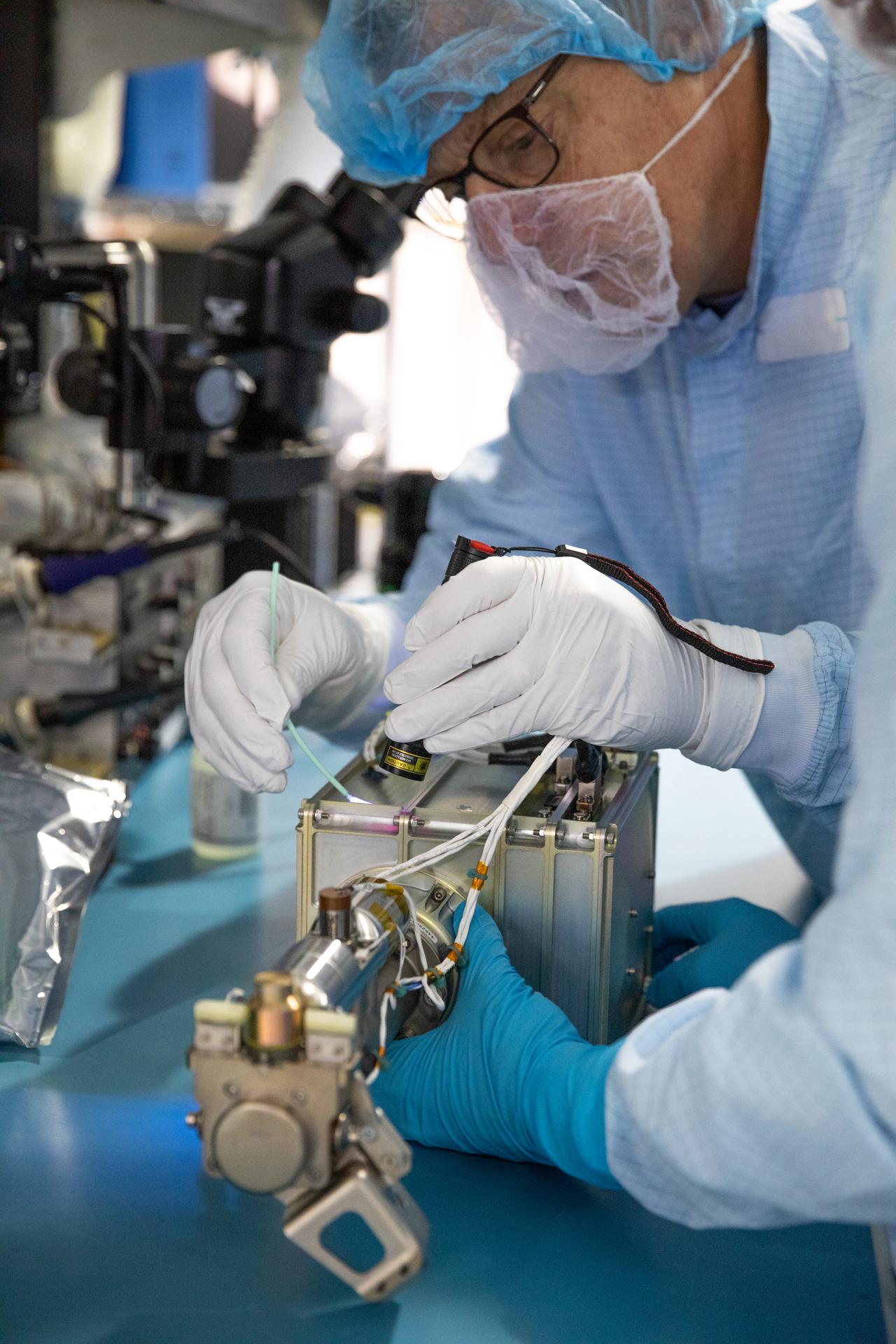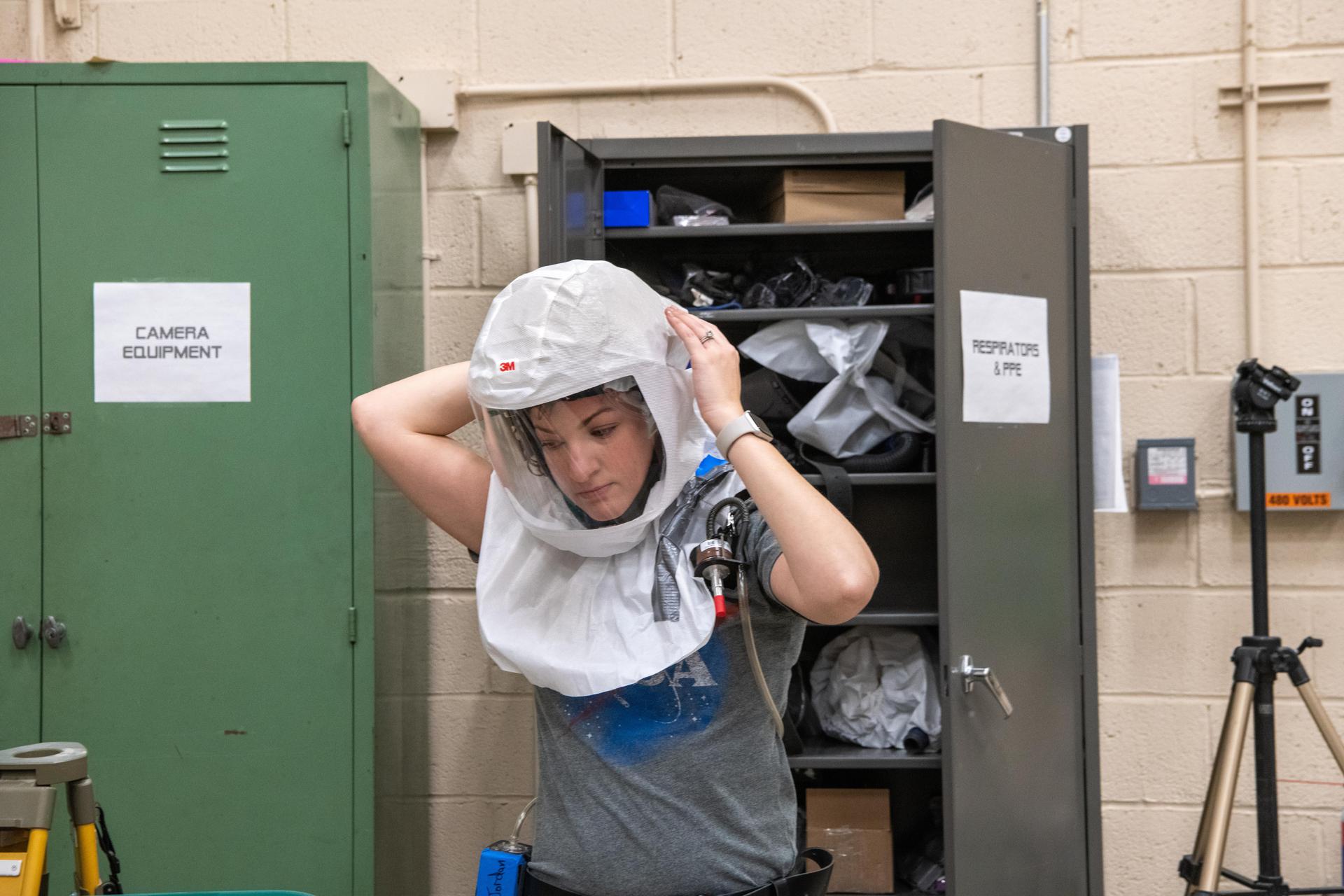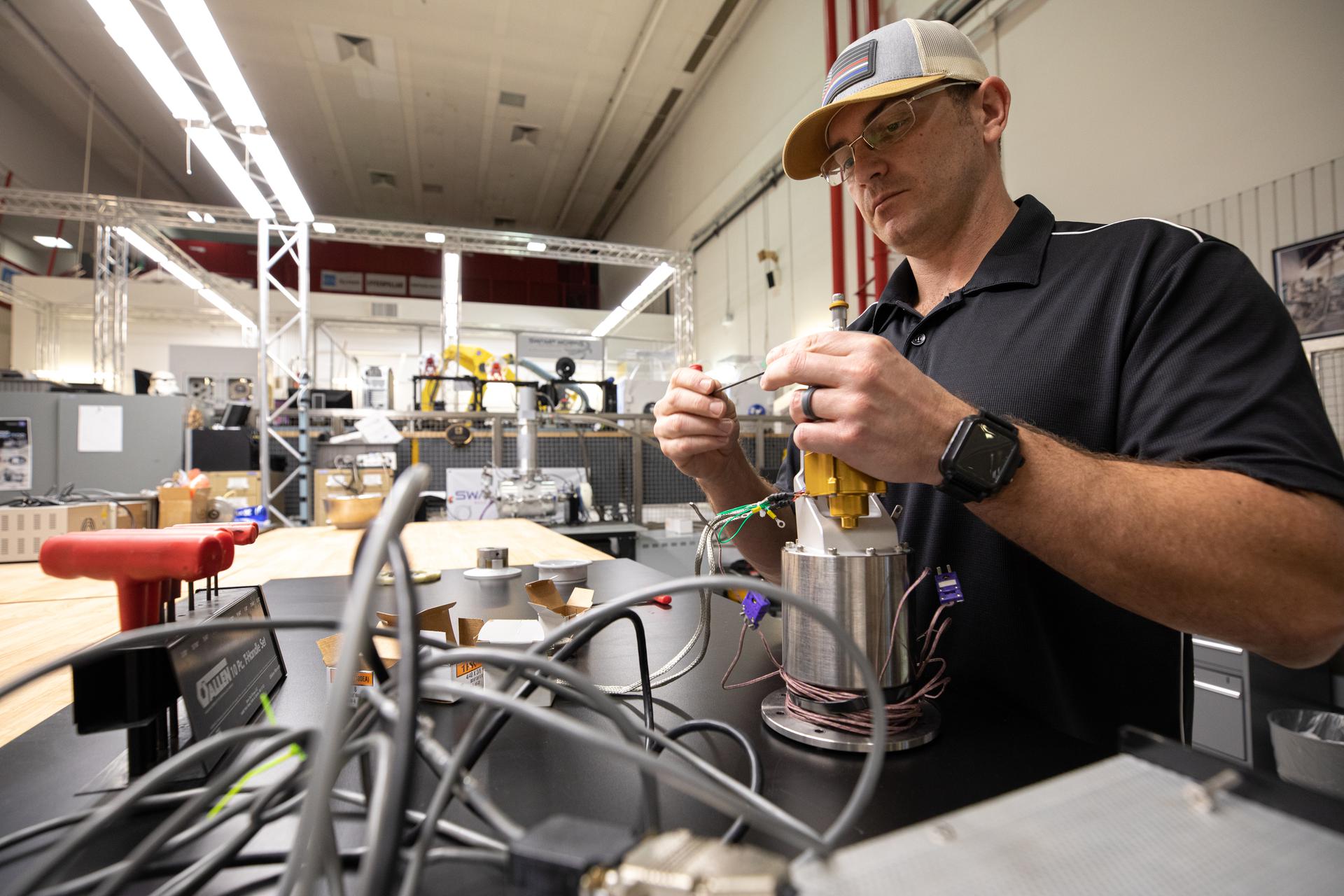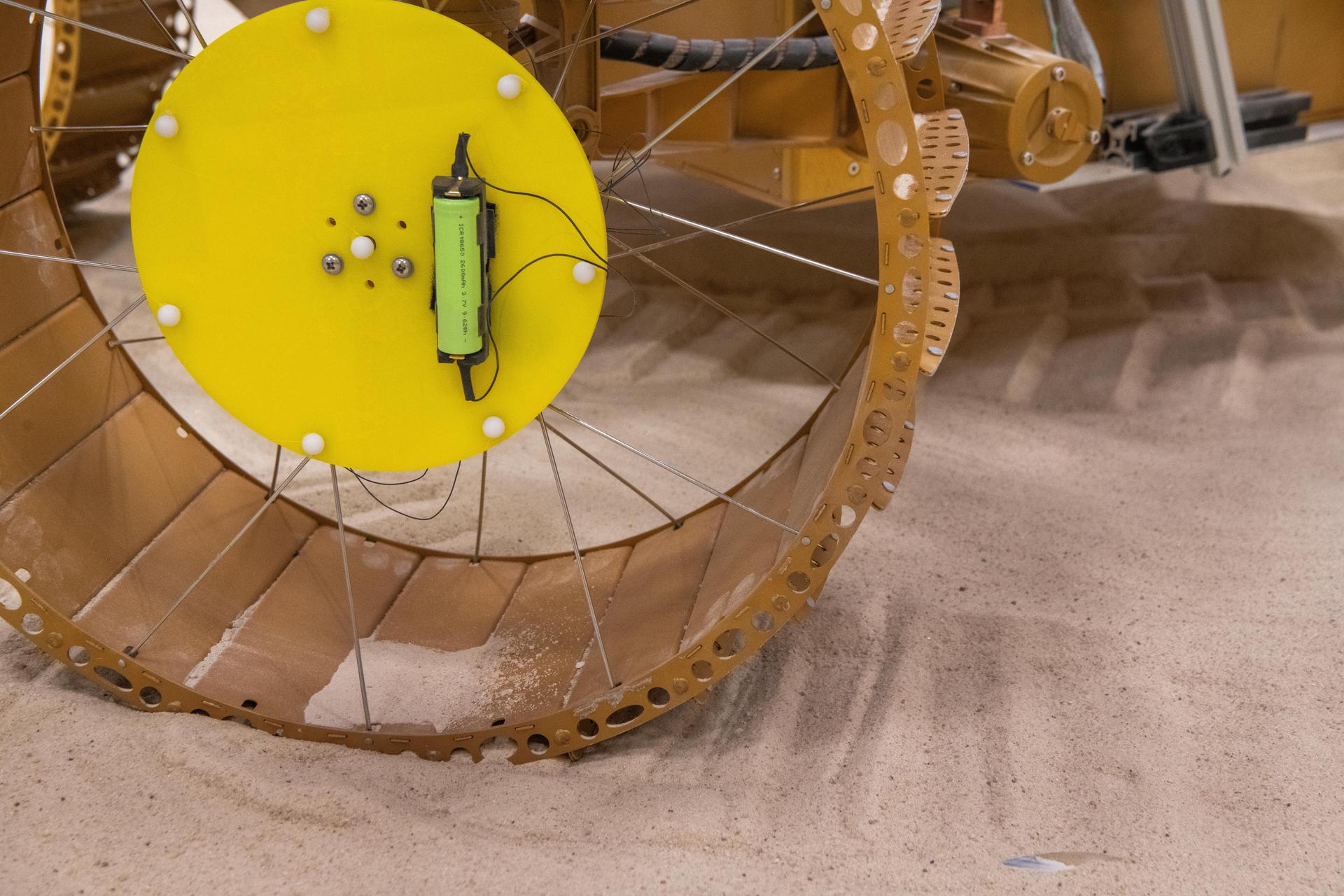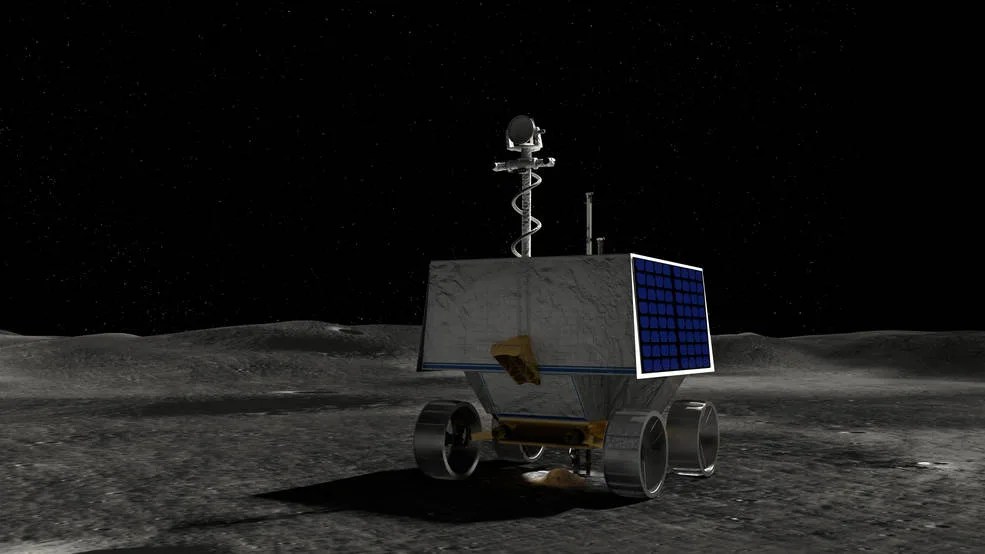VIPER
Volatiles Investigating Polar Exploration Rover
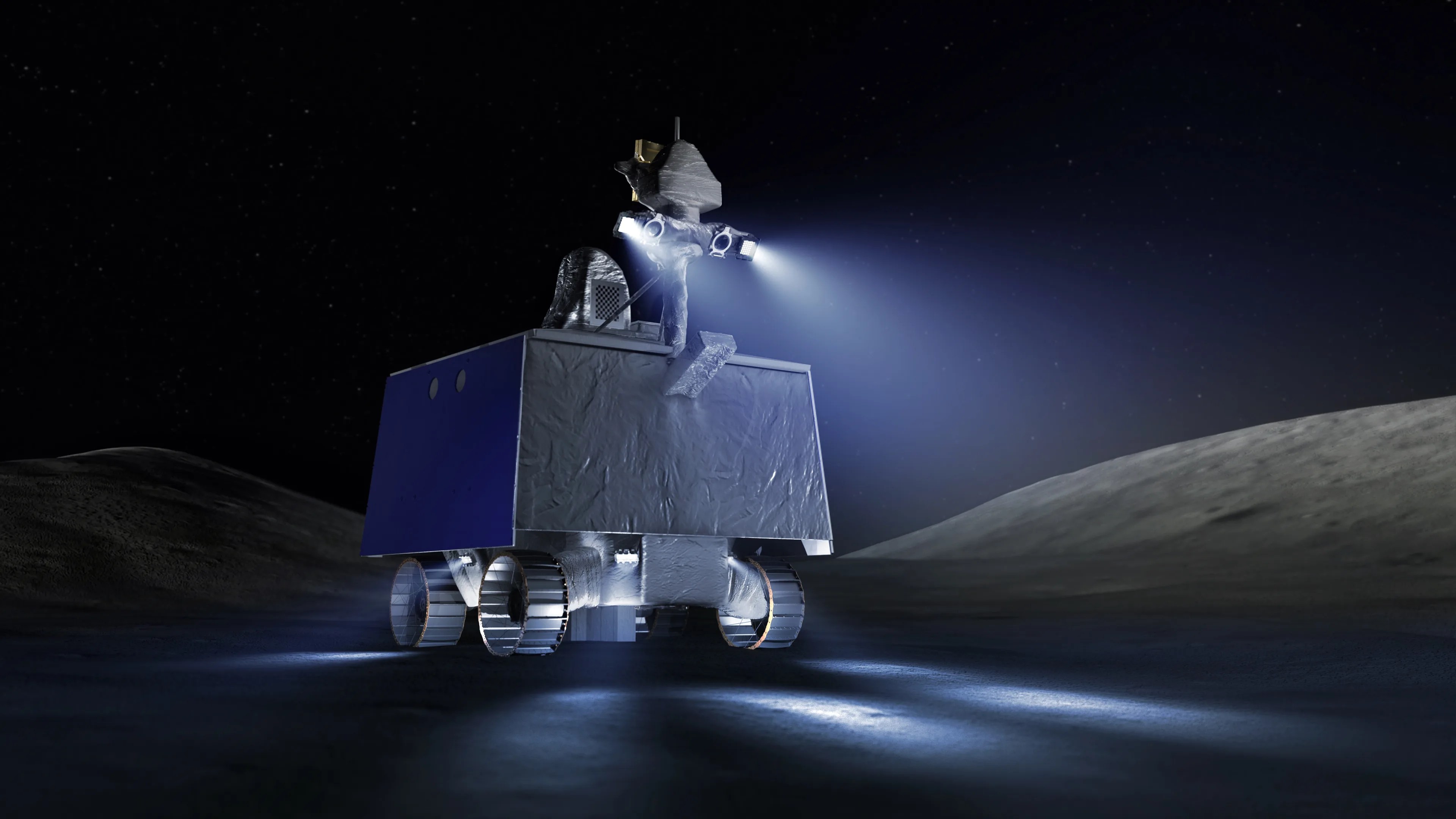
Overview
NASA's Artemis lunar rover, the Volatiles Investigating Polar Exploration Rover, or VIPER, is designed to explore the relatively nearby but extreme environment of the Moon in search of ice and other potential resources. This mobile robot was slated to land at the South Pole of the Moon on a 100-day mission. The critical information it provides will teach us about the origin and distribution of water on the Moon and help determine how we can harvest the Moon's resources for future human space exploration.
NASA will use the data the rover collects to show where the Moon's ice is most likely to be found and easiest to access, making VIPER the first-ever resource mapping mission on another celestial body. The first resource maps of the Moon will mark a critical step forward for NASA's Artemis missions to establish a long-term presence on the surface of the Moon.
Thanks to past missions such as satellites orbiting the Moon or impacting its surface, we know there is ice at the lunar poles. But to be able to use it one day, we need to learn more about that water – up close and personal. VIPER will roam the Moon using its three instruments and a 3.28-foot (1-meter) drill to detect and analyze various lunar soil environments at a range of depths and temperatures. The rover will venture into permanently shadowed craters, some of the coldest spots in the solar system, where ice reserves have endured for billions of years.
VIPER’s instruments will also make important science measurements. Determining the distribution, physical state, and composition of these ice deposits will help us understand the sources of the lunar polar water, giving us insight into the distribution and origin of water and other volatiles across the solar system.
During VIPER’s exploration of the Moon, the rover will endure extreme temperature conditions, dynamic lighting, and complex terrain, while near-real-time rover driving will present new engineering and design challenges the team must overcome.
NASA's Moon Rover Faces Extreme Mobility Tests
VIPER will face a rugged environment during its mission at the Moon’s South Pole. Mission team members created a simulated lunar terrain to test the rover’s mobility.
Learn More



